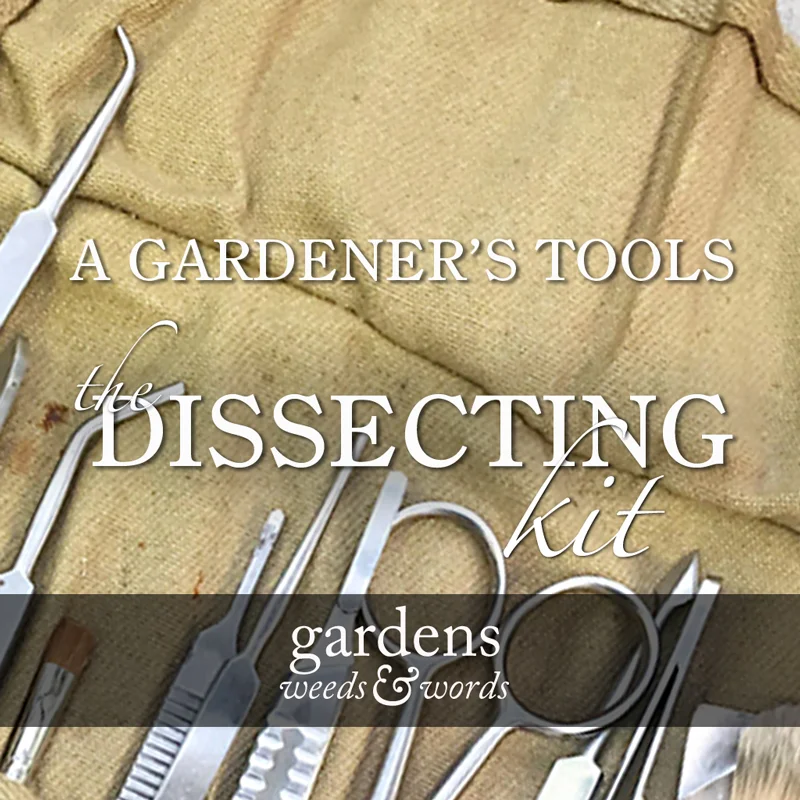Grandma, Helen Miles, née. Blackhall – this is her (below) aged 21 – was quite an aristocratic young lady. She could be austere, hard and, dare I say it, cruel. Sometimes, however, she would dole out the boiled sweets or honey buns.
Image copyright © Robbie Blackhall-Miles
Born in 1908, on the 28th of February, she died April 1994 aged 86 having struggled with Alzheimer’s disease. During the last couple of years we didn’t see her – she left little for me other than those memories of her illness.
She was certainly not a gardener, her past was one of Scottish society and the social circles that went with it. The gardener in me comes from the working-class side of the family on my mum’s side. She resented my mother for marrying her son, but little can stand in the way of true love.
What, I wonder, would she would think of what has become of her butter knife?
It’s the one cherished thing I have that links me to her. Bone handled and made of the best Sheffield steel, it’s the only piece left from a full set that once lived in the dining room at ‘Ivanhoe’ – the family home that passed to my parents upon her death. Complete with a monkey puzzle tree, an orchard (with tree house), topiary, lawns, herbaceous borders and vine house, we had lived there for a while before she became so ill that she had to move into care. The vine house was replaced by a patio in the truest of late 80’s styling, between the paving slabs of which ancient horsetails appeared, causing a dispute between my mother and I.
It was now that the dinner service would be put to its best use.
My mother, insistent that the Equisetum be removed, pressed the butter knives from my grandmothers set into service, and they became the tool of choice for the removal of this pernicious weed from the cracks. On our hands and knees, we ‘scuffled’ them out with the knife – chopping their heads off, and encouraging, rather than stifling, their growth.
A budding horticulturist, I saw the potential of this tool and soon took began to wield it. Weeding the rock garden, removing liverwort from the tops of pots, chopping the rhizomes of bearded iris or gently exposing the cambium of semi ripe cuttings – its versatility had made it invaluable. Twelve butter knifes became six; and then three; and, now, one.
It lives in the draw with the other cutlery but rarely gets used for food. It is sharpened regularly.
Image copyright © Robbie Blackhall-Miles
When no other tool will do the job – when I need delicacy – it is brought out. When I need accuracy – its end has been worked to a point. Its handle feels comfortable in my hand and allows me dexterity, and when I need just the right balance between flexibility and strength – for the removal of dandelion roots, grass in the cracks in concrete and brambles from mortar in walls – I know for what to reach. A Hedichium plant can become hundreds through its careful employment, chrysanthemums disbudded, whips cut and canes split. It is equally as well-suited for cutting apples freshly picked from the espaliers it has helped to create as it is for cutting cheese to go with those apples, and spreading butter on the bread that accompanies them.
I wonder what she would think.
Would Helen Blackhall be shocked that something of luxury and that had sat in such grandeur is being used in such a way? Would she be angry and threaten Edwardian punishments for this juxtaposition of upper and working class? Or would she see the humour and chuckle gently with her lilting, soft Edinburgh tone?
My grandmother’s butter knife is my garden tool of choice for many reasons, but most notably for the closeness it brings me to a lady I hardly knew whilst she was alive.
Robbie specialises in propagating rare and unusual plants in his backyard botanic garden in North Wales, with a particular focus on plants represented in the fossil record. Find out more at Fossil Plants.






Robbie Blackhall-Miles of Fossil Plants wonders what his grandma would make of what he’s been getting up to with her butter knife. This is the third post in the series on A gardener’s tools.